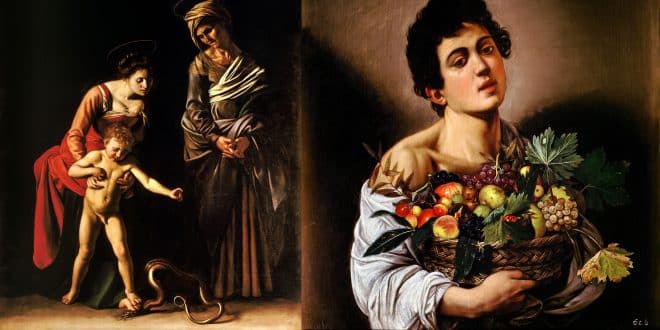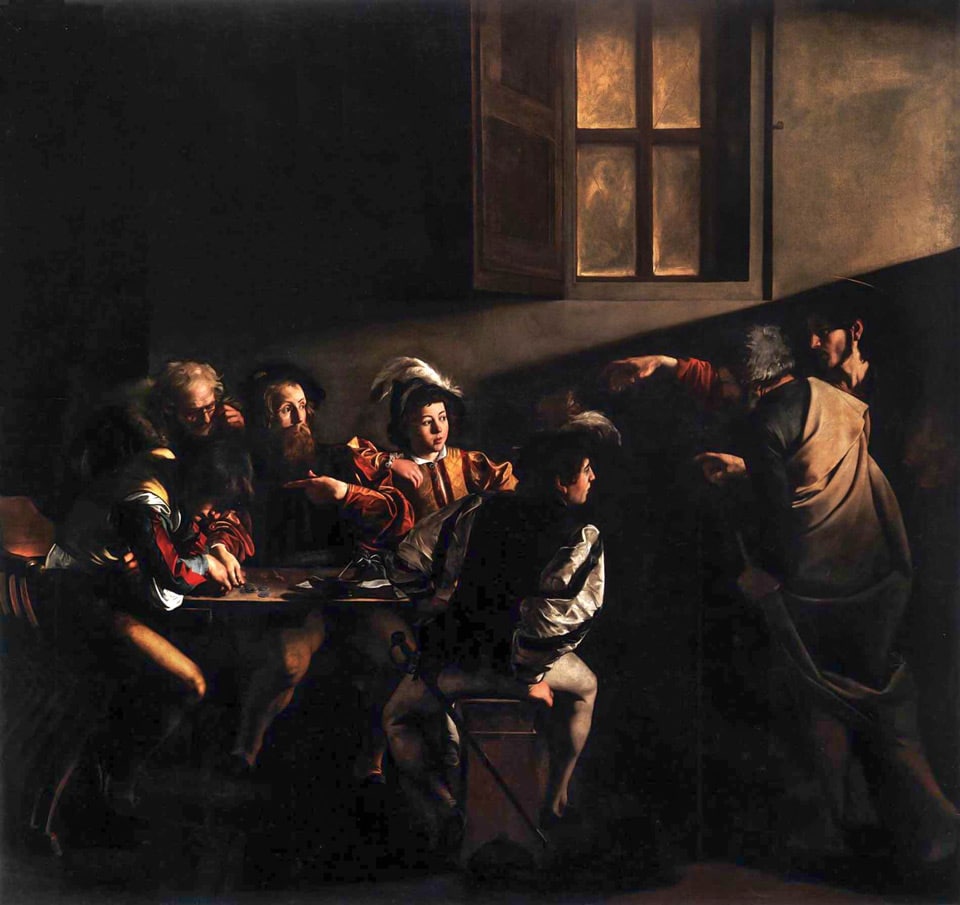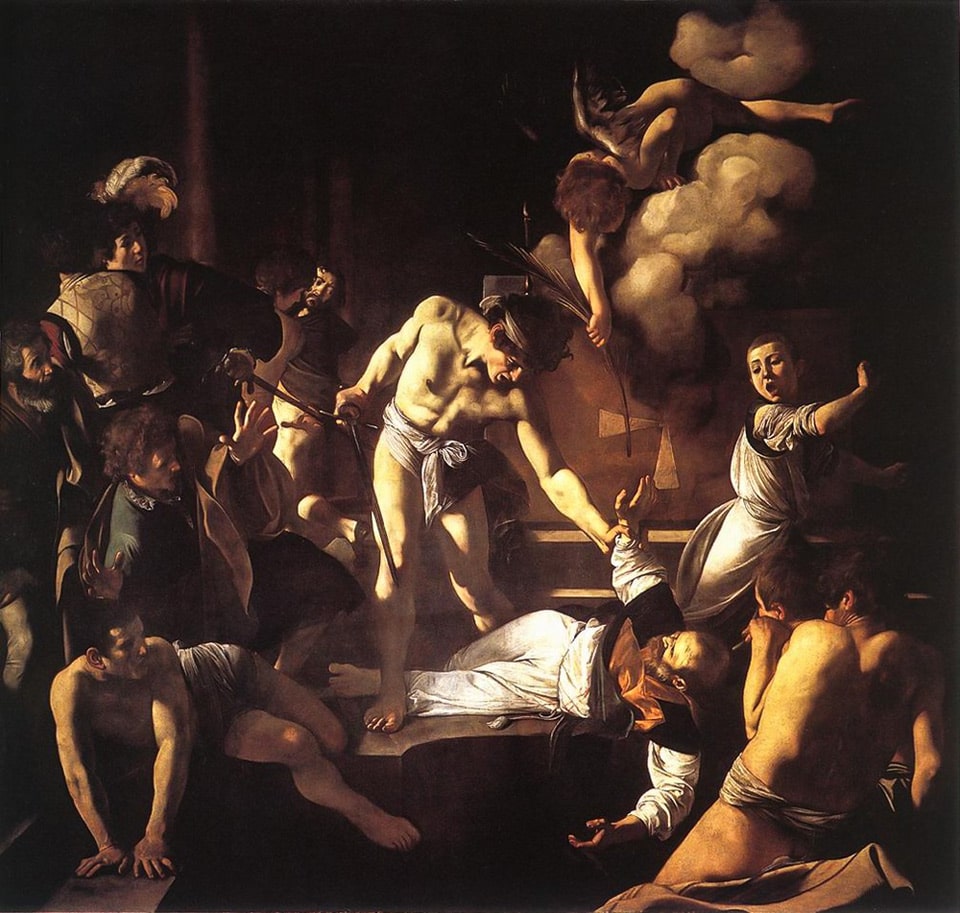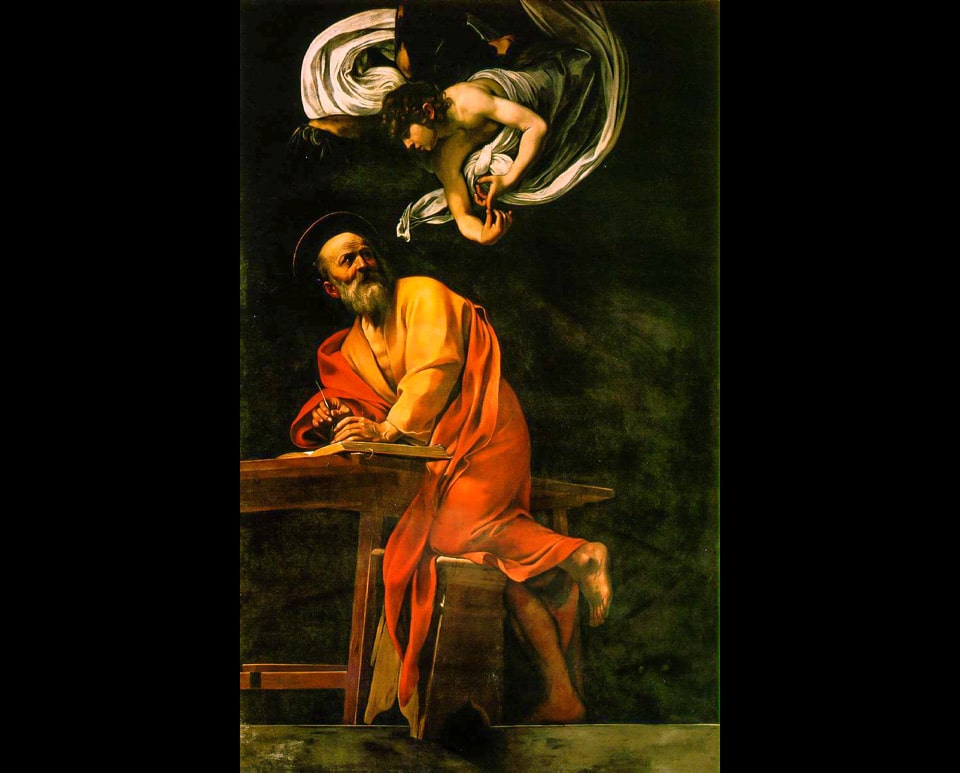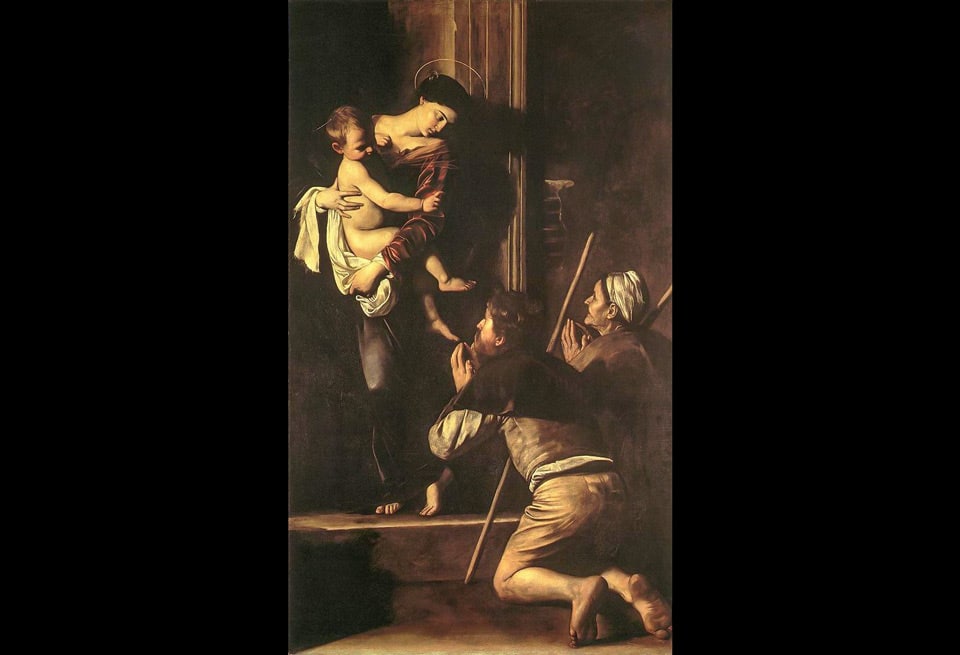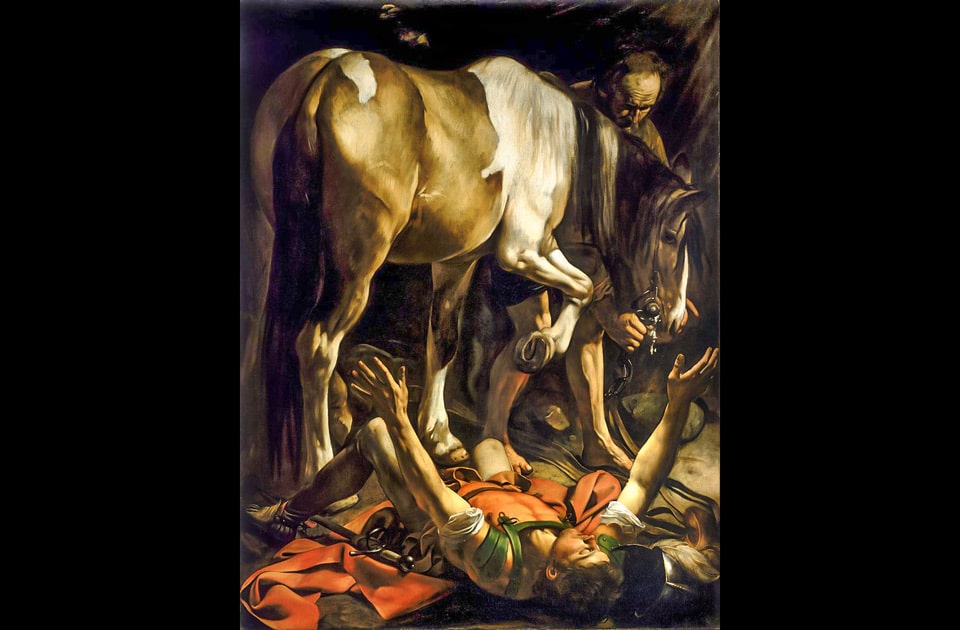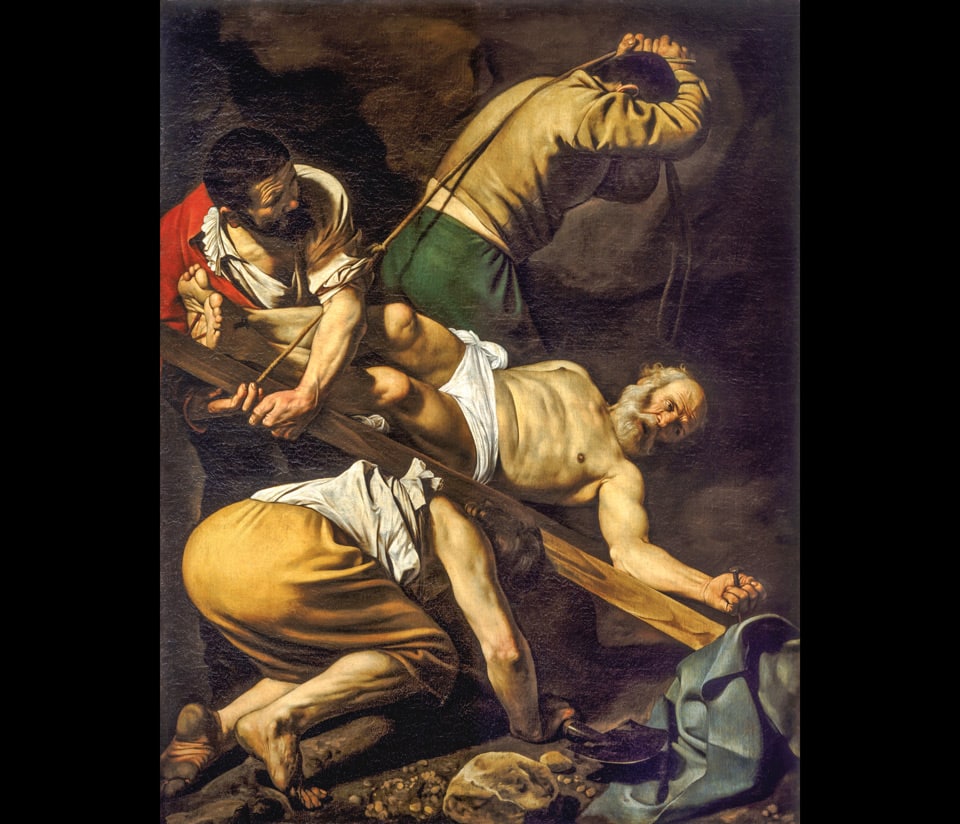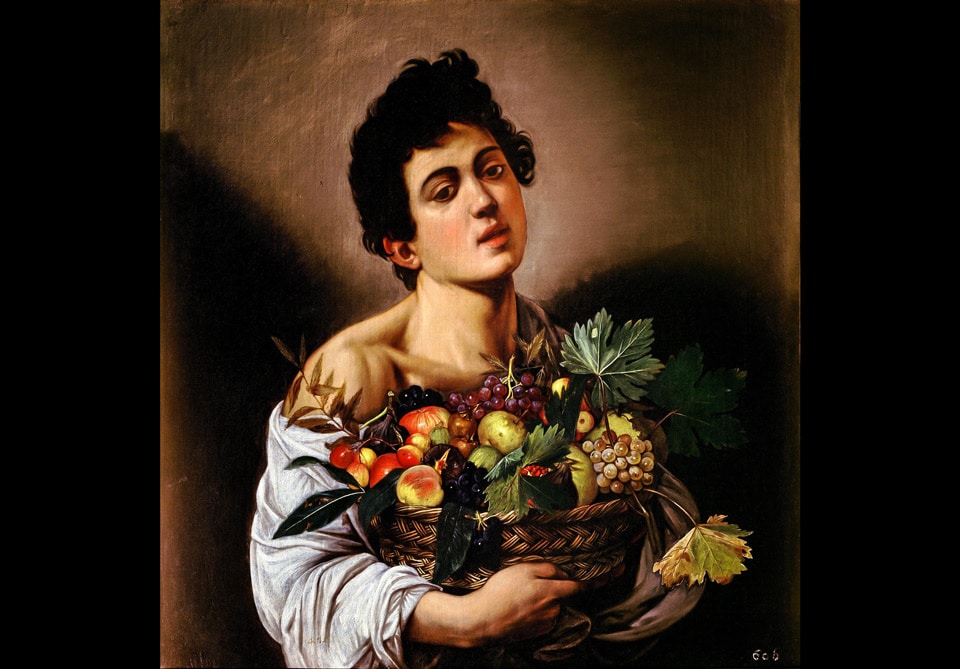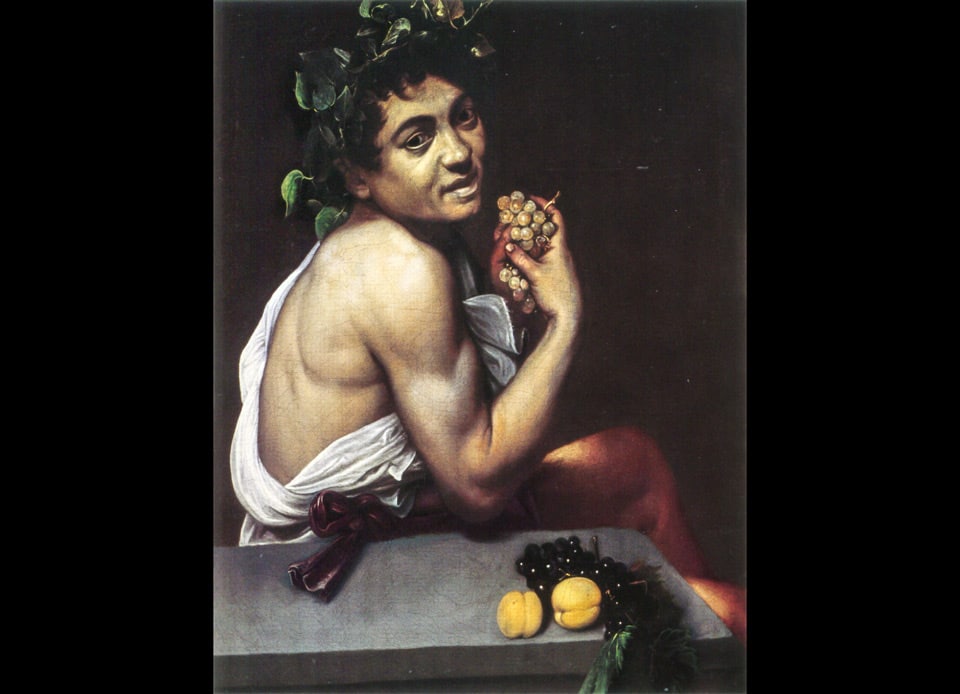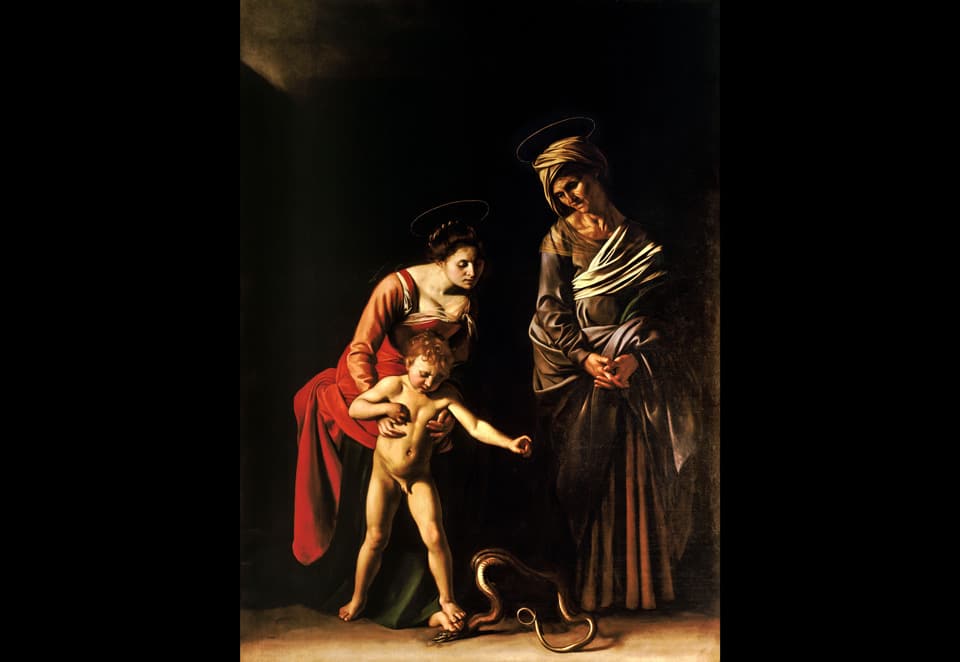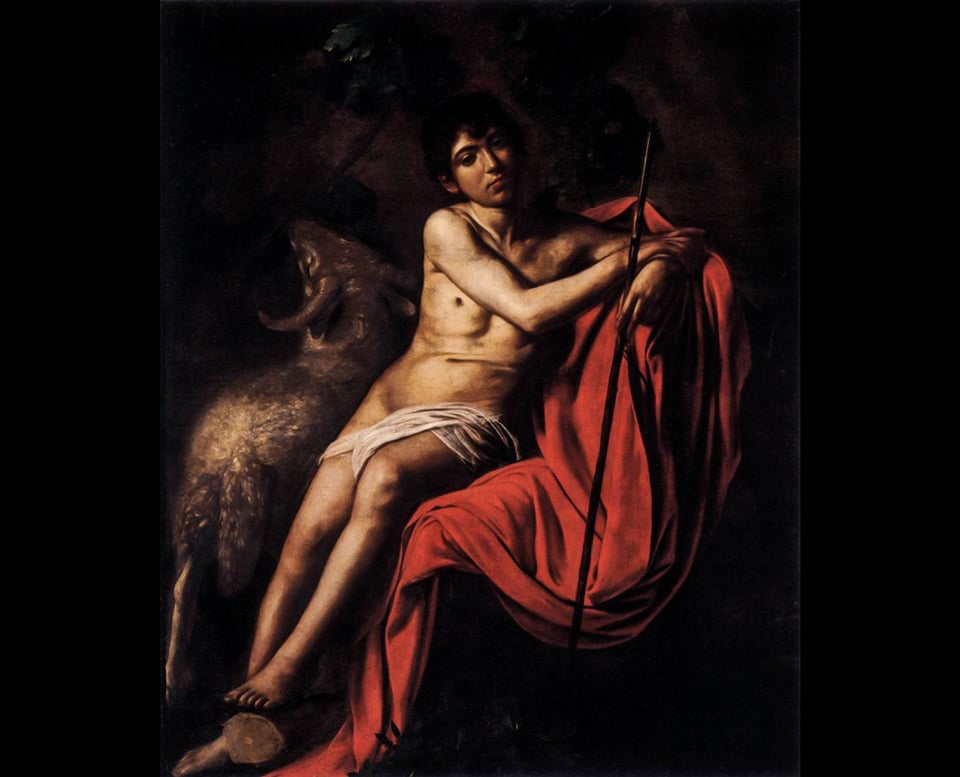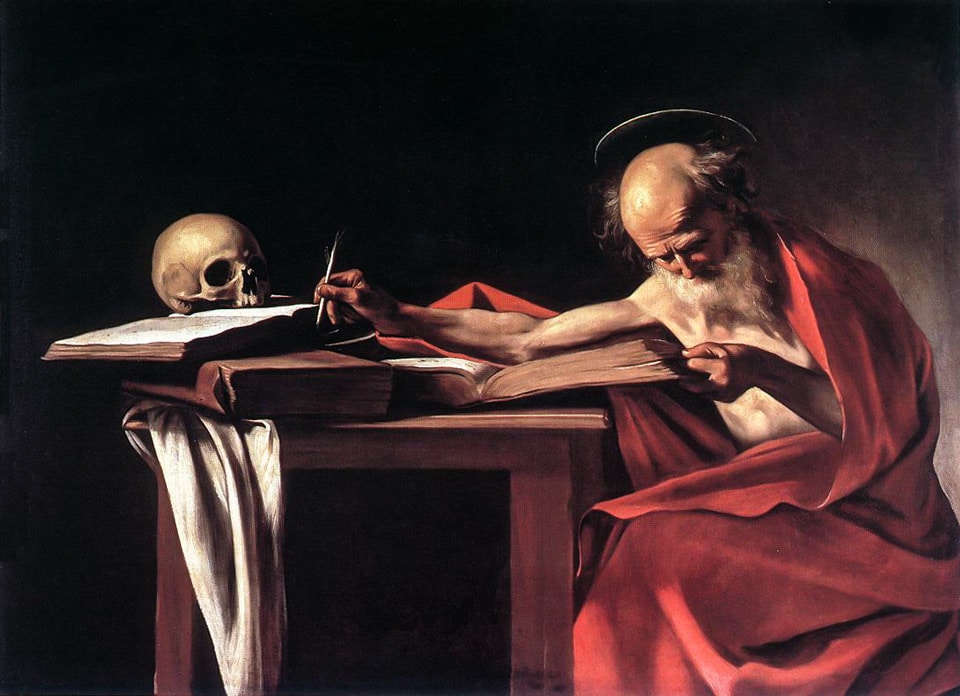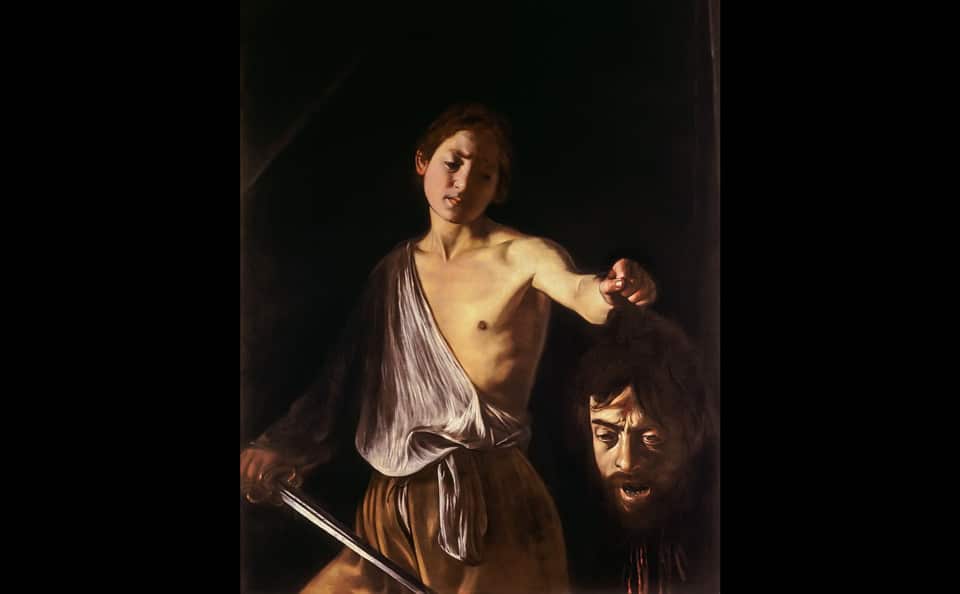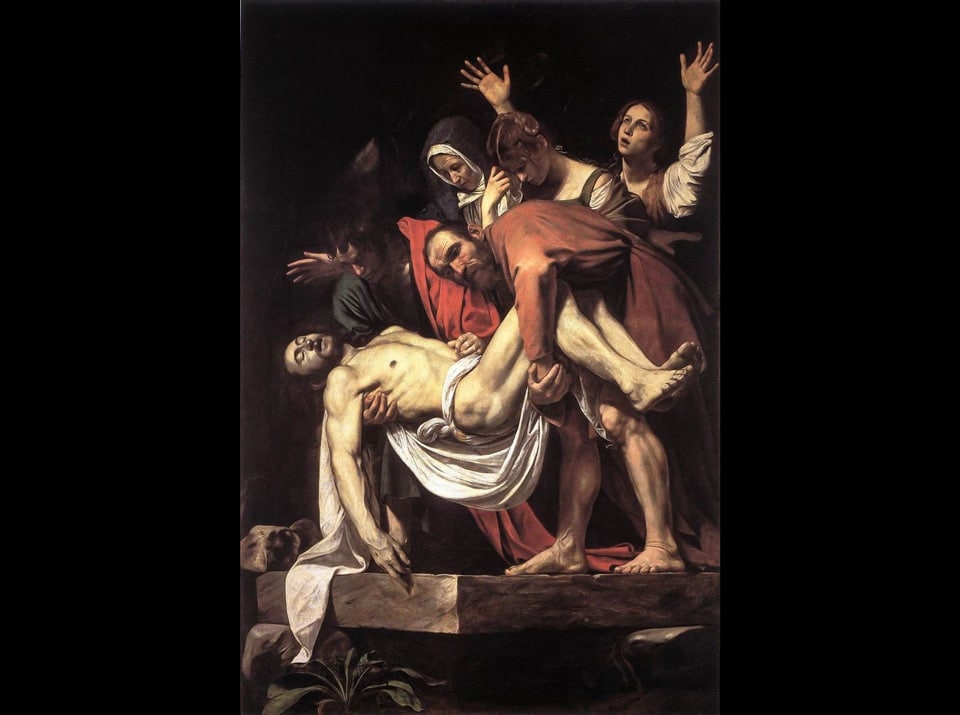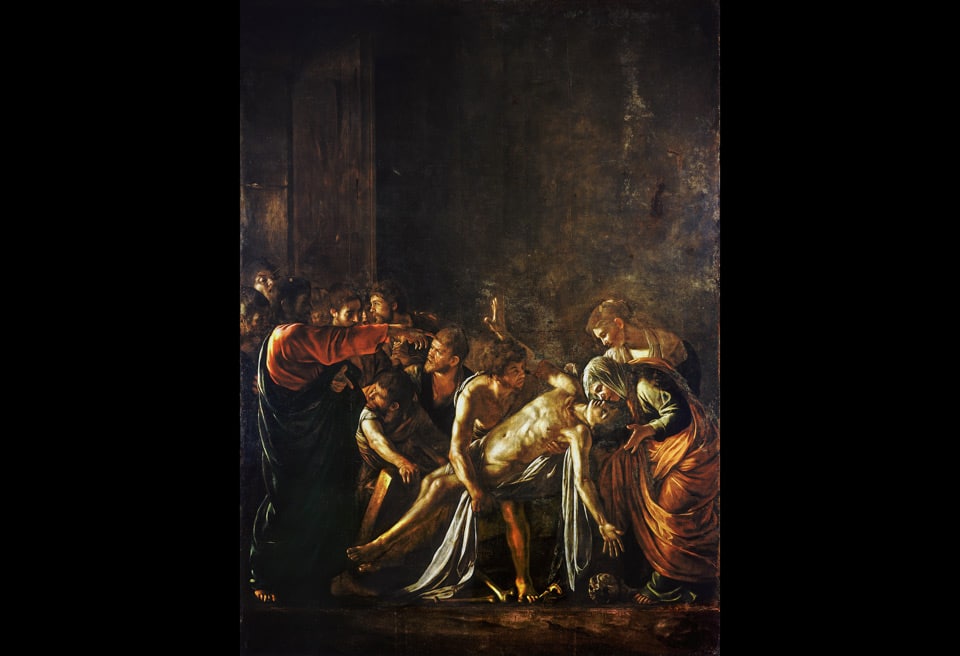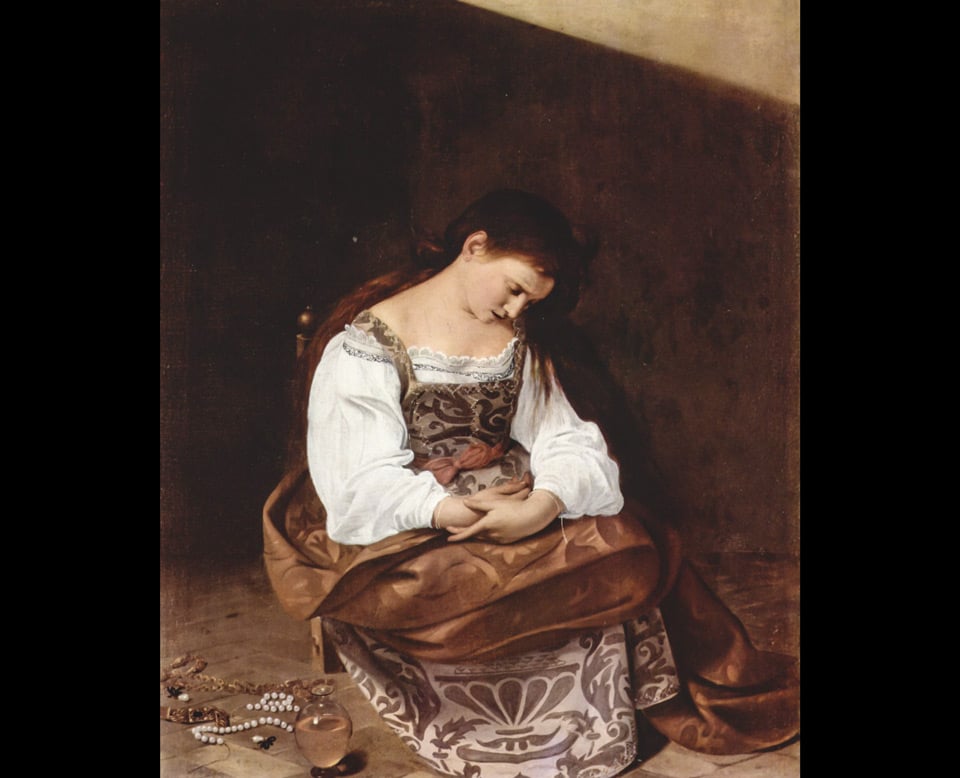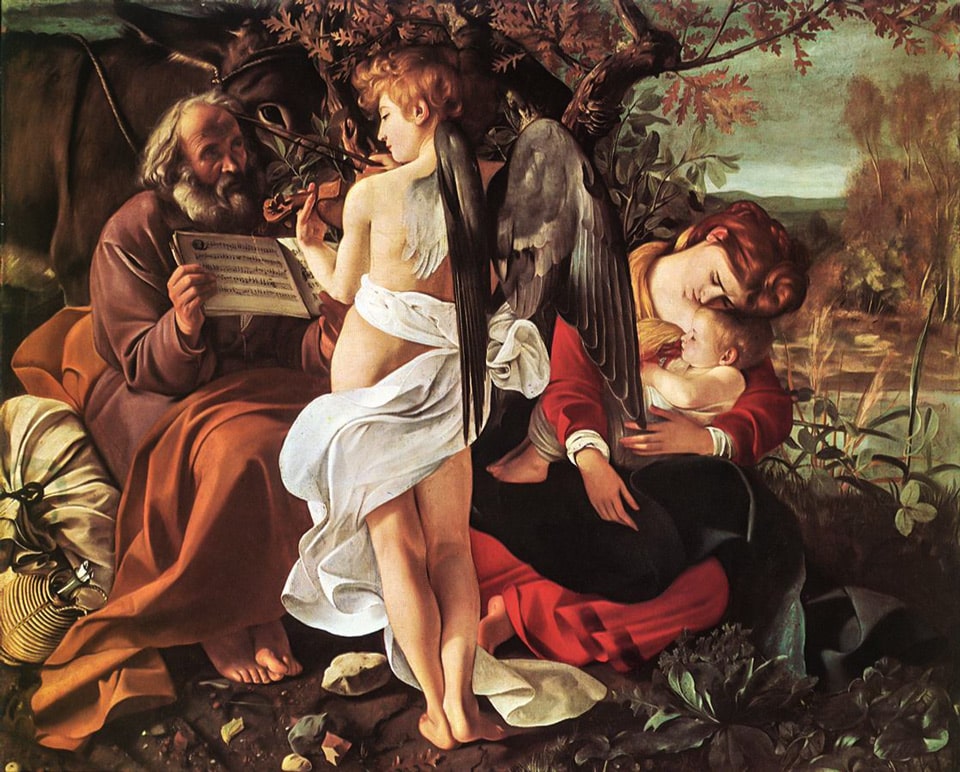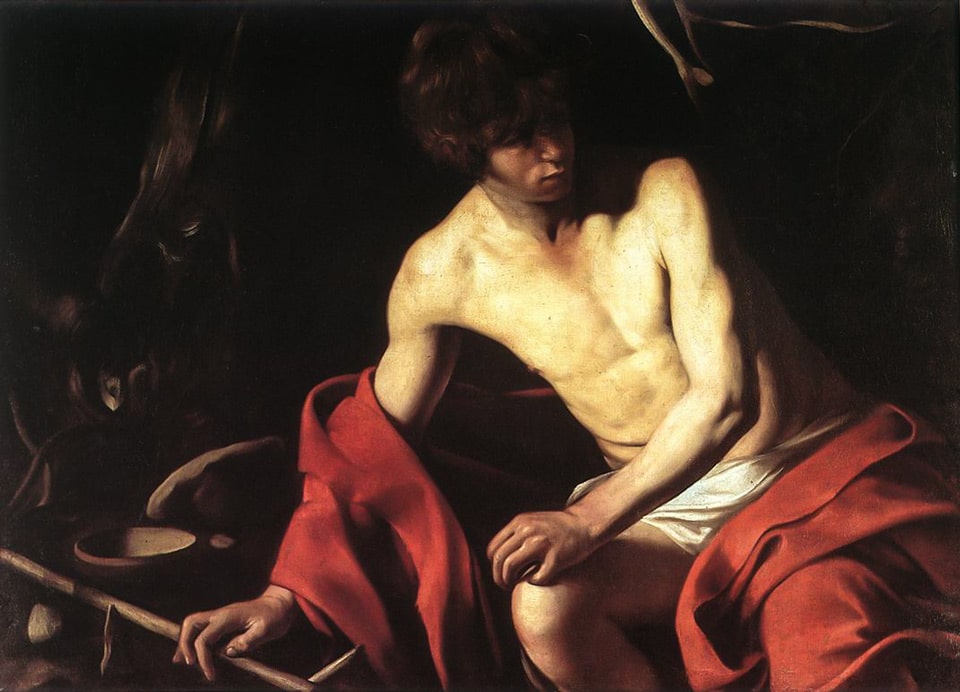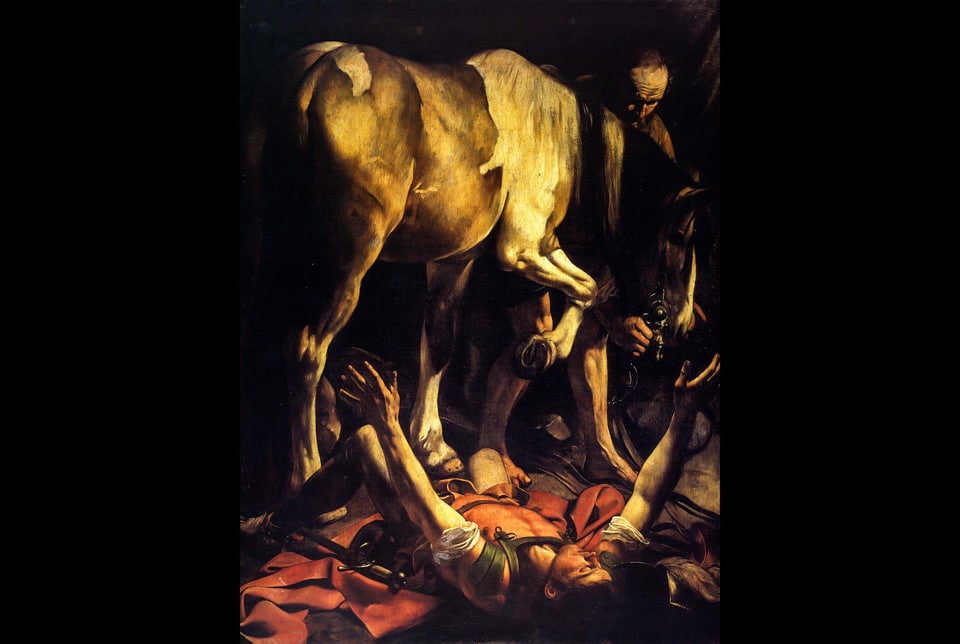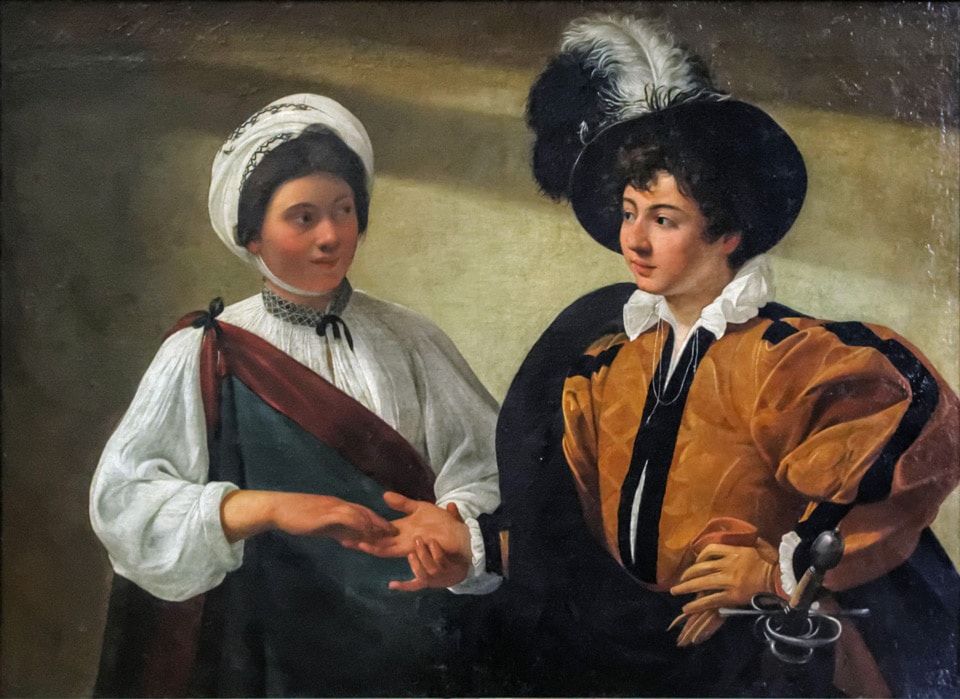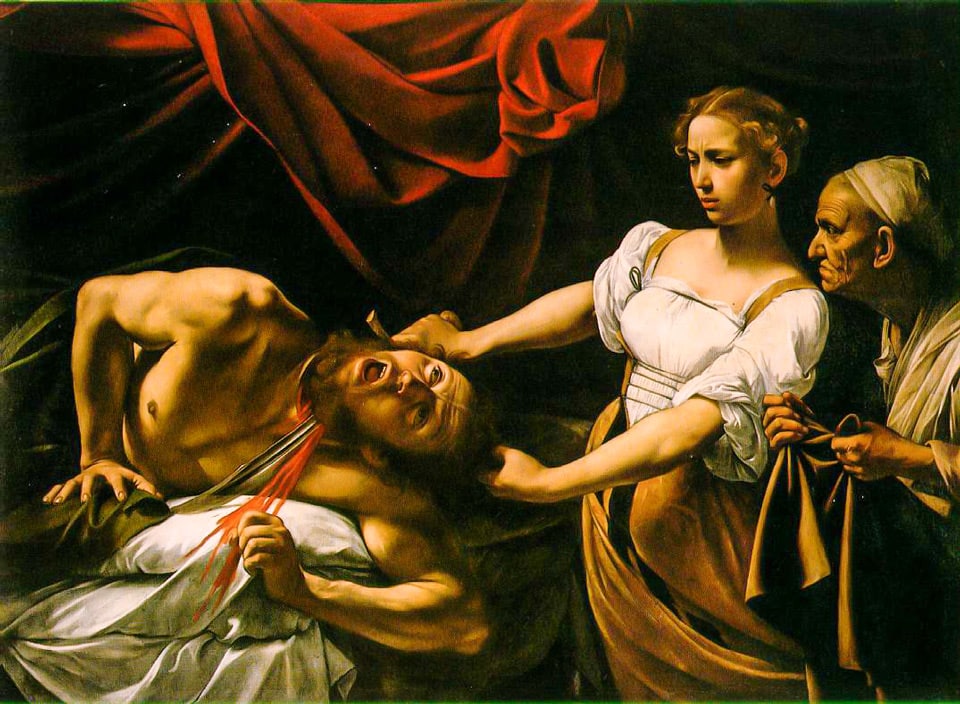The famous Italian artist, Michelangelo Merisi da Caravaggio (Italian: Michelangelo Merisi da Caravaggio), is known as the most vivid reformer of painting at the turn of the 16th and 17th centuries (years of life: 1571 – 1610).
Caravaggio achieved such mastery in using contrasts of light and shadow in his paintings that an entire generation of “Caravaggisti” artists emerged after him. Caravaggio did not acknowledge the existing rules that drawings should create idealized images on canvases – he depicted real people in his paintings: street boys, courtesans, and old men.
The master left no sketches to posterity – he created directly on the canvas.
Page Contents
What is Important to Know about Caravaggio – Quick Overview
Why is Caravaggio considered a great artist?
Who influenced Caravaggio?
What technique did Caravaggio use to paint?
What is Caravaggio’s most famous painting?
How many paintings did Caravaggio paint?
In which countries are Caravaggio’s paintings located, and how many?
How many Caravaggio paintings are in Rome?
Biography
The artist was born in a suburb of Milan, where, after a plague epidemic, he lost his father early, and his mother moved with the children to the town of Caravaggio. The talented young man had a difficult and unaccommodating character. In 1591, he had to flee to Rome after tragic altercations with card players, later depicted in his work “The Cardsharps.”
Incidentally, he would find himself in various predicaments throughout his career. Caravaggio was repeatedly under investigation, but his reputation as a scandalous brawler did not hinder his demand.
In the capital, his gift as a painter was noticed, earning him patronage and basic skills at the school of Titian. Since there was already a genius named Michelangelo in art history, our artist chose a different path – he adopted the nickname “Caravaggio,” copying the name of his hometown.
In Rome, he left the world his best canvases during the creative period from 1592 to 1606.
On May 29, 1606, a tragic accident occurred in Caravaggio’s life – Ranuccio Tomassoni was killed during a street ball game, and the great master was deemed guilty of the murder. To avoid being convicted, the artist fled, leaving Rome.
He then moved to La Valletta (the capital of Malta) and joined the Order of Malta. However, his wanderings continued until the end of his life. Eventually, the artist died of malaria at 39, forgotten and forsaken, leaving the world dozens of his masterpieces.
Caravaggio’s brushwork includes the first still life in the Italian painting – “Basket of Fruit” – one of the most famous still lifes by the master, where fruits are depicted so accurately they resemble a macro shot.
But he began portraying fruits slightly earlier, in portraits of adolescents – such as “Boy with a Basket of Fruit,” “Bacchus.”
Some of his most successful themes were replicated 2-3 times by the artist, commissioned by wealthy nobles – “The Fortune Teller,” “Boy Peeling Fruit” (one of his first masterpieces). He rarely depicted women – “Penitent Magdalene,” “Judith Beheading Holofernes,” “Madonna and Child with Saint Anne,” and a few others.
In the early 17th century, Rome became a school for European artists. Over time, the master of the “chiaroscuro” technique opened his workshop, where he had many talented students, such as Mario de Fiori, Spada, and Bartolomeo Manfredi.
Subsequently, the imitation of Caravaggio’s “chiaroscuro” became evident in the works of Velázquez and Rubens, Rembrandt, and Georges de La Tour.
Although some of his works are irretrievably lost, Rome still houses many paintings by Caravaggio, which can be viewed for free in churches and for a fee in museums and private collections. Below, I provide a complete list of paintings with addresses for true fans of the great master’s work.
Free of Charge
Church of San Luigi dei Francesi
- Address: Piazza di S. Luigi de’ Francesi
Lovers of Caravaggio’s canvases often visit the holy abode of San Luigi dei Francesi (San Luigi dei Francesi) – one of Rome’s “jewels.” Still, as the name suggests, the church was initially opened for the French community. It was built as a tribute to the French monarch Louis IX (1214-1270), who managed to end the irreconcilable enmity between the church and secular leadership. In Byzantium, the ruler negotiated the redemption of the most sacred Christian relic – the Crown of Thorns of the Savior (kept in France).
The church became another “long-term construction project,” but after 70 years, the holy abode, filled with masterpieces, was completed in 1589. Everything here is permeated with reverence for the Holy Mary, which befits Catholicism. However, the building looks relatively modest if you exclude the statue and all the luxury inside. Frescoes by Domenichino, colorful marble decoration, gilded images.
Here in the Contarelli Chapel (to the left of the main altar), you can see three works by the great Merisi da Caravaggio, depicting scenes from the life of Saint Apostle Matthew.
The painter replaced the previous master, and after Cavalier d’Arpino, he had to complete and redo some works. Those who hired Caravaggio took a risk, as the master disliked sketches, worked under a bundle of directed light, and constructed composition differently than many of his contemporaries. But the risk was justified, and today, we can witness “The Calling of Saint Matthew.”
“The Calling of Saint Matthew” (canvas 322 x 340 cm, painted in 1599) is a famous scene of the calling of the tax collector by Jesus to be a disciple, who later became the Apostle and author of the “Gospel of Matthew.” Two well-dressed young men, sitting near the tax collector, look with genuine interest at the image of the Savior, calling the chosen one with a pointing finger. The work reflects the influence of predecessors, for instance, the characteristic hand of the Lord from Michelangelo’s famous painting in the Sistine Chapel.
Interestingly, Saint Matthew is the patron saint of tax authorities in almost every country.
The Martyrdom of Saint Matthew
“The Martyrdom of Saint Matthew” (canvas 323 x 343 cm, painted in 1599-1600) depicts the scene of the evangelist’s killing, where one can discern Caravaggio’s self-portrait. Experts assert that the artist’s face is turned backward among the onlookers in the background. The realist painter broke religious canons, replacing pathos with the realism of suffering for the Good News. The painting was created for the Contarelli family chapel.
Saint Matthew and the Angel
“Saint Matthew and the Angel” (canvas painted in 1599-1602) portrays an inspired Apostle listening to the voice of an Angel as he writes the Gospel of Matthew. The painting is renowned because the patron was shocked by the realism of the image, where the Holy Apostle is depicted as an ordinary person, contrary to the canons.
Basilica of Saint Augustine
- Address: Piazza di Sant’Agostino
The Church of Saint Augustine (Sant’Agostino) is another place in Rome where art lovers can see a masterpiece by Caravaggio. The building is easily located on the square of the same name.
Here, one can admire Caravaggio’s “Madonna di Loreto” and other masterpieces by Italian masters of the era.
Caravaggio’s realistic biblical characters and unique painting style made him famous and well-paid. He executed profitable commissions for church decorations. In the last decade of his life, the painter predominantly created works based on Gospel stories, depicting biblical characters.
Madonna di Loreto or Mother of Pilgrims
“Madonna di Loreto or Mother of Pilgrims” (canvas, 1604-1605) is located in the first chapel on the left and is the most controversial work of the master. There were extravagant incidents – the altar image of the Madonna was painted by a courtesan.
Courtesans always posed for everyone, but Caravaggio was the first to refuse to transform an ordinary model into an idealized image of the Madonna, leaving everything as it is.
Officials were outraged by the indecent exposure of the breast, although this is common for a nursing mother. However, it was precisely the violation of canons that made Caravaggio’s reformist paintings famous. Some contemporaries were also disturbed by the dirty feet of the pilgrims depicted in the painting, but such is the law of realism.
Biblical stories embodied in Caravaggio’s paintings were so impressive that they were repeatedly attempted to be copied. However, the unique manner of painting gave no chance to the imitators, and all forgeries look dull and pale. Most great masters of “chiaroscuro” ‘s works are based on biblical stories. Therefore, they were revered by the religious elite.
Basilica of Santa Maria del Popolo
- Address: Piazza del Popolo
- Opening hours: 7:15–12:30, 16:00–19:00
Another place in Rome displays two masterpieces by Caravaggio and many other works of art. The unassuming-looking Basilica of Santa Maria del Popolo is open in the morning and evening. It’s easily accessible by metro (red line A) to the Flaminio station or a 10-minute walk from the Spanish Steps. This site is part of the tourist route near the northern gates of Rome (Porta del Popolo), where on the left stands a discreet building, one of the sanctuaries of the Virgin Mary. The modest appearance of the building is deceptive, but as written in the Bible: “All the glory of the King’s daughter is within.”
Your destination – the left nave near the altar – features works by Annibale Carracci and Merisi da Caravaggio.
The Conversion of Saul or Paul on the Road to Damascus 
“The Conversion of Saul” or “Paul on the Road to Damascus” (1601) illustrates the biblical story of the beginning of Apostle Paul’s service to God, formerly known as Saul. He is known to the Christian world as the author of several Epistles in the New Testament. Caravaggio depicted this story several times, and this version is the most realistic, known for its composition with the horse. Pharisee Saul (Saul), who had the task of imprisoning the first Christians, had a supernatural encounter with Jesus, who spoke to him from heaven on the way to Damascus. His companions did not understand anything but stood petrified, while the miraculous light blinded Paul for three days, leading to his healing, repentance, and service to God.
The Crucifixion of Saint Peter
“The Crucifixion of Saint Peter” (1600-1601) depicts Saint Apostle Peter (formerly Simon), chosen by Christ, being crucified upside down. This unnatural position in which the Apostle willingly accepted death was the martyr’s desire. He felt unworthy to be crucified like Christ. This story is told by Caravaggio’s painting, the great master of light and shadow.
Learn more about Saint Peter on a special tour of St. Peter’s Basilica and the Vatican at dawn, avoiding queues and crowds of tourists.
Paid Admission
Borghese Gallery
- Address: Piazzale del Museo Borghese, 5
- Cost: from 16 euros – instructions on how to buy a ticket without intermediaries
- Website: borghese.gallery/creators/caravaggio/
Boy with a Basket of Fruit
“Boy with a Basket of Fruit” (1593-1594) is one of the artist’s earliest works, featuring meticulously rendered details of each fruit.
Sick Bacchus
“Sick Bacchus” (1592-1593) is a famous self-portrait of the painter. The young artist was ill and struggling financially at the time. He had to work without a model and painted his own pale, greenish face from a mirror reflection. One of the master’s best creations, initially sold to settle debts from his painting teacher’s private collection in Rome, was confiscated and ended up in the collection of Scipione Borghese, the nephew of the Pope. Art enthusiasts are captivated by the semi-nude youth’s pained expression and the masterful depiction of white-pink and black grapes.
Madonna and Child with Saint Anne
“Madonna and Child with Saint Anne” (1606) is one of the most revered works, known as “Madonna with the Serpent,” where Christ and Mary are stepping on the head of a serpent.
According to apocryphal texts, Saint Anne is the mother of Mary and the grandmother of Jesus. She blessed the Child when He was first brought to the temple, and she stands a bit away in this depiction. The work was intended for the altar of the Church of St. Anne.
Saint John the Baptist
“John the Baptist” (1610) – there are several versions of this subject, and at that time, portraits of many nude youths were often labeled as such. The painter’s style is recognizable by his unmatched mastery in depicting naked youths, sharply defined by light. Although the biblical figure has been celebrated by many painters, not all reflect the austere image of the Forerunner, baptizing the masses in the Jordan River. He lived in the wilderness, covering his nakedness with animal skins and eating dried locusts and wild honey. Painters often named their works after John the Baptist to give significance to their works. For authenticity, they depicted a staff and ram skins – attributes of the wanderer and ascetic in the paintings.
Saint Jerome in Meditation
“Saint Jerome in Meditation” (1606) is a canvas with a philosophical meaning, where a human skull prompts the elderly saint to contemplate the essence of existence. It is said that this subject inspired many authors of masterpieces in literature and art. Remember “To be, or not to be…”?
David with the Head of Goliath
“David with the Head of Goliath” (1609-1610) is one of the most interesting paintings the artist carried with him for a long time and continuously perfected.
This is one of Caravaggio’s later works. Still an outlaw, he hoped for the Pope’s pardon. Caravaggio depicts himself as Goliath, whose head was severed by David.
However, David in the painting is not shown as a victor – he looks at Goliath’s severed head almost with sympathy. Caravaggio sent the painting to Rome as a gift to Cardinal Scipione Borghese, hoping to receive papal compassion, and as a sign of this, on David’s sword are the letters “h.o.s.,” meaning “humility conquers pride.”
Although the heads may seem disproportionate, this is not a mistake by the artist.
The Bible describes David as a handsome, blond youth. When the armies of the Israelites and Philistines stood on the battlefield, the shepherd David brought lunch to his brothers, but the battle did not start – Israel had no worthy challenger. The giant Goliath (2.5 meters tall) uttered curses and blasphemies against the Israelites and their God. David was outraged by the disdainful tone toward the Israelites and their God and struck the braggart in the forehead with a stone from his sling. He then severed his head to encourage Israel. Therefore, Goliath’s head is prominent in the painting, and David is still very young.
Vatican Pinacoteca
- Address: Viale Centro del Bosco, 00120 Città del Vaticano
- Cost: from 21 euros
- Opening Hours: 9:00 to 16:00
Caravaggio’s paintings can also be found in the Vatican Pinacoteca, which is part of the Vatican Museum complex.
The Entombment of Christ
In the Vatican, pilgrims are presented with an illustration of the biblical scene “The Entombment of Christ” (canvas 300 x 203 cm, painted in 1602-1603). This composition was subsequently copied by many followers of Caravaggio and is also known as “The Deposition of Christ.” Christ was taken down from the cross and placed in a cave intended for burial.
One of the artist’s great masterpieces, now kept in the Vatican Pinacoteca, was originally painted for the Chiesa Nuova (New Church). The composition impresses with the depth of the tragedy of the Gospel’s central scene–about the Savior’s crucifixion and his burial before His miraculous resurrection. Jesus died on the cross for the sins of all humanity, becoming the perfect atoning sacrifice to God. One of the strongest expressions of tragedy in the realistic canvases of the master.
There is a notable case when his commitment to realism reached fanaticism – the depiction of a dead nature for the painting “The Resurrection of Lazarus.”
As known from the Gospel, Jesus came to resurrect his deceased friend, the brother of Martha and Mary, on the fourth day when the body “already stinks.” Models refused to pose with a decomposing corpse, and Caravaggio compelled them to do so under threats until he achieved his goal. However, this work is exhibited in the Regional Museum of Messina (Museo Regionale Interdisciplinare di Messina) in Sicily in Messina, not in Rome.
Doria Pamphilj Gallery
- Address: Via del Corso, 305. Read the article about the street Via del Corso.
- Ticket: 12 euros
- Opening Hours: 9:00 to 19:00
The Doria Pamphilj Gallery (Galleria Doria Pamphilj) is a grey building with memorable architecture once owned by cardinals. Later, the palace passed into private ownership from the Aldobrandini family to the Pamphili, who intermarried with another noble family – Doria. Their descendants devoted much time and effort to enrich the family collection of masterpieces with new works of art, including 2 paintings by Caravaggio.
The Penitent Magdalene
“The Penitent Magdalene” (1595) depicts the well-known biblical story of the repentance of a sinner caught in adultery, whom the Pharisees and the scribes were not permitted by Jesus to stone. The famous saying of Jesus, “He that is without sin among you, let him first cast a stone at her,” granted this woman the right to life and repentance. Subsequently, she washed Jesus’ feet with her tears and anointed them with precious ointments on the eve of His crucifixion.
Rest on the Flight into Egypt
“Rest on the Flight into Egypt” (1595) portrays the Holy Family during their flight with the Infant, as described in the “Gospel of Matthew.” This famous episode from the life of Joseph and Mary, who had to flee from King Herod’s decree ordering the killing of all male infants up to two years old, is vividly captured. The reason for Herod’s wrath was the prophecy of the birth of the Messiah and Savior, said to him by the Magi who had seen the Star of Bethlehem.
Palazzo Corsini
- Address: Via della Lungara, 10
Palazzo Corsini, located in the Trastevere area near Villa Farnesina, belonged to a respected family of Florentines who moved to Rome. The palace features gardens, buildings, and a collection of artworks, including a painting by Caravaggio.
John the Baptist
“John the Baptist” (1603-1604) is one of the versions of the popular biblical figure of John the Forerunner, who lived in the desert and baptized people in the Jordan River. During those times, this was one of the most beloved biblical characters, hence the many versions of this theme. Caravaggio himself has several paintings with the same title. The figure of the ascetic, who ate locusts (edible grasshoppers) and wild honey, covered his nakedness with animal skins, and baptized masses in the Jordan, was highly revered. Jesus referred to him as the greatest of prophets. However, half-naked figures were often painted by artists of that time, and when they wanted to sell paintings featuring young men profitably, they would add the attributes of a wanderer’s staff and ram’s skins.
No one can say with certainty why Caravaggio painted Gospel scenes in the last decade of his life.
Whether it was the conversion of a repentant sinner to God, well-paid commissions for churches, or a reading of the Holy Scriptures remains unknown. The works of his last decade were signed with the letter “F,” meaning “brother” (a member of a fraternity of believers). His paintings are valuable because they are not just scenes on a biblical theme; they convey a deep empathy.
Odescalchi-Balbi Collection
- Address: Palazzo Odescalchi Balbi, Piazza dei Santi Apostoli, 80
The Conversion of Saul
“The Conversion of Saul” (circa 1600) is one of the versions of a composition that impresses with its realism – a biblical character blinded by divine light from heaven. In the Acts of the Apostles, the story is told of a Pharisee, “a zealous upholder of ancestral traditions,” and the Law of Moses, who terrorized the early disciples of Jesus Christ. The divine light initially blinded him, then radically changed his life, and Saul (Saul) became Paul, the greatest of the Apostles.
This version of Saul’s repentance story – the first masterpiece rejected by a client for the Cerasi Chapel in the church of Santa Maria del Popolo, which we mentioned earlier. It is considered a less successful work by the master of “chiaroscuro,” although the unmatched play of light and shadow here is quite indicative. The complex composition with a dramatic plot is reflected in every gesture – the blinded Saul covers his eyes with his hands. On his way to Damascus, he was overwhelmed by divine light, leading to repentance, after which he became known as Apostle Paul, who wrote a significant part of the New Testament.
Capitoline Museums Pinacoteca
Address: Piazza del Campidoglio, 1
The Fortune Teller
“The Fortune Teller” or “The Soothsayer” (canvas 99 x 131 cm, 1594-1595) is located in the Pinacoteca of the Capitoline Museums. The artist painted this subject several times on commission for wealthy clients. There are also several copies of the composition that were repeatedly replicated by his followers. However, with its stunning effects of light and shadow, his painting is inimitable, making forgeries easy to distinguish from the original.
The young artist, upon arriving in Rome, experimented a lot, seeking characteristic types for his paintings.
The talented painter rejected the generally accepted methods of Mannerism painting and depicted real, living people in the same environment. He left the commonly accepted Baroque painting style, favoring Lombard realism instead.
Contemporaries testified to a real encounter Caravaggio had with a gypsy girl who predicted his complicated fate. He gave her money and invited her to his home as a model for his next masterpiece “The Fortune Teller”.
Many of the subjects in his paintings are not related to religious themes, and these genre scenes today provide an opportunity to understand what Italians looked like at that time. His contemporaries, their daily life, clothing, dishes, and musical instruments are well known today from his most famous paintings, including “The Fortune Teller.”
The second version of “The Fortune Teller” by Caravaggio is located in the Louvre (www.louvre.fr).
Barberini Palace
Tourists can find the Palazzo Barberini at Via delle Quattro Fontane 13, close to the famous Triton Fountain at Piazza Barberini. This luxurious Baroque-style palace is one of the most visited places, displaying another great creation by Caravaggio.
Judith Beheading Holofernes
“Judith Beheading Holofernes” (1599) is a pictorial illustration of the well-known legend. The painting is unusual and breaks the classical stereotypes of painting of that time. Particularly interesting is the realistic grimace of disgust of the Jewish widow while beheading the Babylonian general.
Narcissus
“Narcissus” or “A Youth Looking at His Reflection” (1599) masterfully depicts a young man intently gazing at his reflection in the water. The subject of the painting is very famous and was taken from Ovid’s “Metamorphoses”: a beautiful youth who was loved by a nymph who rejected her love, for which he was punished by the gods.
Unfortunately, some of Caravaggio’s paintings have been stolen or lost, and while there are copies of some, others attributed to Caravaggio’s brush are disputed. There are other works, but they adorn collections in Europe and America. However, most of his paintings are in Rome, and we are delighted to invite you for inspiration.
 Italy for me From Italy with love
Italy for me From Italy with love

